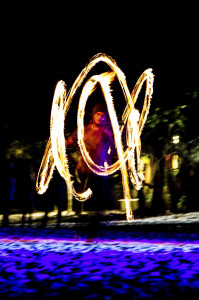“We live only part of the life we are given,” writes Michael Murphy in The Future of the Body. “Growing acquaintance with once-foreign cultures, new discoveries about our subliminal depths, and the dawning recognition that each social group reinforces just some human attributes while neglecting or suppressing others … suggests that we harbor a range of capacities that no single philosophy or psychology has fully embraced.”

Rudolf Laban would certainly agree. “Preference for a few effort combinations only results in a lack of effort balance,” Laban notes. “New dances and new ideas of behavior arise by a process of compensation in which a more or less conscious attempt is made to regain the use of lost or neglected effort patterns.”
If we live only a part of the life we are given, it is because we habitually use only a few effort combinations. To me, the great benefit of effort study is to experience, if only fleetingly, other ways of being in the world.
While I was first studying Laban Movement Analysis, I had a profound experience embodying an effort combination of the Spell Drive. I momentarily became someone else and glimpsed an unfamiliar inner landscape. This was not a part of the world that I normally inhabit. Maybe I didn’t really want to live here. But it was wonderful to discover a new realm of experience and to realize that I could consciously choose to enter this new world simply by moving in a certain way.
To me, the study of effort is the study of human potential, a chance to access a greater range of capacities that are not just physical in nature, but personal, psychological, and perhaps even spiritual.


 correspondence course, Rebecca Nordstrom created a sequence of basic actions and imagined this movement sequence as a scenario involving the
correspondence course, Rebecca Nordstrom created a sequence of basic actions and imagined this movement sequence as a scenario involving the 

 Henri Bergson, the French philosopher, was fascinated by how analytical thinking leads us to misperceive our own experience of being alive. For Bergson, life is an unceasing, continuous, undivided process, a sort of cosmic movement. Yet, we tend to conceive our lives as passing from feeling to feeling or thought to thought, as if each is separate, unchanging thing. In reality, feelings and thoughts are themselves in a state of flux, and it is the experience of continuous changes that is central to the experience of being alive.
Henri Bergson, the French philosopher, was fascinated by how analytical thinking leads us to misperceive our own experience of being alive. For Bergson, life is an unceasing, continuous, undivided process, a sort of cosmic movement. Yet, we tend to conceive our lives as passing from feeling to feeling or thought to thought, as if each is separate, unchanging thing. In reality, feelings and thoughts are themselves in a state of flux, and it is the experience of continuous changes that is central to the experience of being alive.
 When the dancer Rudolf Laban began to study work movement in British factories, two concerns predominated. The first was efficiency; the second was fatigue. By the 1940s, of course, there were laws governing the length of the workday and providing additional protection for the health and safety of workers. Nevertheless, repetitive activity of any sort is tiring. Human beings are not machines. We cannot repeat any motion endlessly without the need for variation.
When the dancer Rudolf Laban began to study work movement in British factories, two concerns predominated. The first was efficiency; the second was fatigue. By the 1940s, of course, there were laws governing the length of the workday and providing additional protection for the health and safety of workers. Nevertheless, repetitive activity of any sort is tiring. Human beings are not machines. We cannot repeat any motion endlessly without the need for variation.
 A wise man once observed that prayers are always answered. But what comes to you is not what you think you want, but what you embody.
A wise man once observed that prayers are always answered. But what comes to you is not what you think you want, but what you embody.